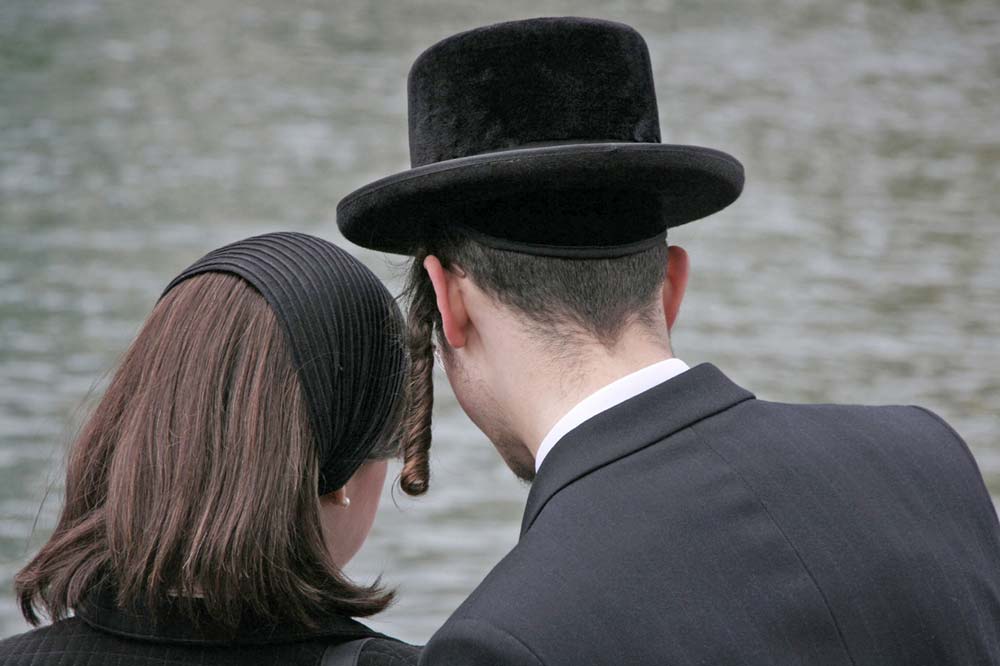
Ultra-Orthodox Hasidic Jews have unique ways in which they wear their hair. Their appearance might seem unusual to an outsider. This page will explain these devout traditions. First it will explain about women, and then it will explain about men.
Women
Hasidic Jewish women have strict rules about their hair. These Ultra-Orthodox customs mainly pertain to keeping the hair covered. You may have heard about some related practices, such as wearing a wig or shaving their head. We will explain more about these things in the following paragraphs.
Do Hasidic Jewish women shave their heads?
This is the subject of many rumors, and a lot people have seen this occur in the Netflix show 'Unorthodox.' Here are the facts: some Hasidic women shave their heads, while others do not.
For those women who shave their heads, they are being extra-observant of the strict modesty rules. They are making it to be impossible that their hair can ever be seen, because they don't have any.
Another possible reason is because of the following: women routinely use a ritual bath. They dunk themselves and their entire body must be 100% submerged in the water. There could be a concern that if their hair is long it will not be fully submerged during the dunk.
Not all Ultra-Orthodox Jewish women shave their heads. Most of them do not. For the women who do not do it, they don't consider it necessary to go to such an extent to fulfill the modesty requirement. Rather, they are satisfied with just carefully keeping their hair covered.
Next we will explain more about the modesty rules.
Ad
Why do Hasidic Jewish women wear wigs? (or Cover Their Hair?)
When a Hasidic woman is married, her hair must be covered in public. It must be completely obscured so that it is totally invisible. This is commonly done with a wig, scarf or hat. The reason for these rules about Hasidic womens' hair is: modesty. Ultra-Orthodox Jews are very strict about this matter, which is called "Tznius." Many women go further with this restriction and they keep their hair covered at all times, even when they are alone. Some of them even shave their heads, as we explained previously.
These hair modesty rules only take effect when a woman gets married. Up until marriage their natural hair does not need to be covered at all.
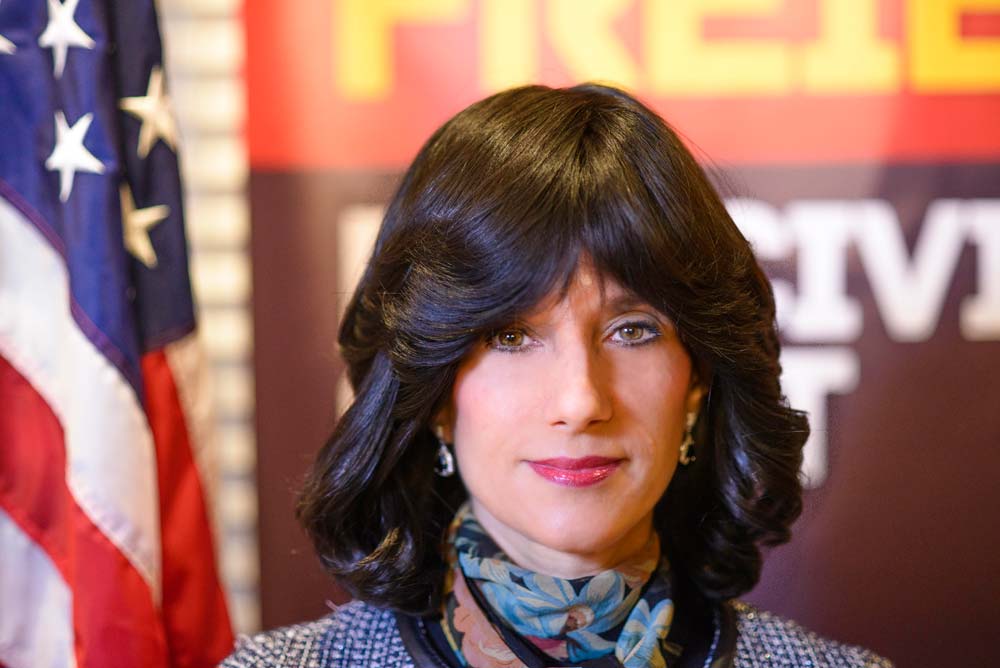
image attribution: Judge Rachel Freier - Photo by Jordan Rathkopf. Image modified by size.
More about wigs and other hair coverings
The most common ways that women will cover their hair is with a wig or scarf, and sometimes a hat. The wig they use is called a "sheitel" in Yiddish. It can be made of synthetic material, or made from real human hair. These wigs are quite expensive, costing as much as $500-1500. Wigs are often purchased from a merchant called a "Sheitel macher," which basically means "wig maker" in Yiddish. Some of these wig salons are in a retail storefront while others are inside of the proprietor's home. The wig proprietor will usually be a woman, because this is considered an intimate matter and therefore would be inappropriate to conduct with a man. It is common that Hasidic women will own 2 or more wigs: one for everyday use, and another for Sabbath, holidays and formal occasions such as a wedding.
The scarf that some Ultra-Orthodox women will wear is called a "tichel." It will be tied in place over the hair. A hat may also be worn, although it typically will not fully cover all the woman's hair alone, so it will be in conjunction with a wig or scarf.
More about Hasidic female modesty rules
Hair restrictions are part of an extensive set of modesty rules which is called "Tznius" in Yiddish and Hebrew. Although the hair rules apply only upon marriage, the rest of the modesty rules apply to all ages, including children. These rules dictate that Hasidic Jewish women must keep their whole bodies covered in public at all times, basically except for their hands and face. Their torso is always 100% covered. Their arms will be covered with sleeves which always extend down past their elbows, usually until their wrists. They will never wear pants - only dresses or skirts which are long and will extend down below their knees or until their ankles. Also, their feet and ankles will always be covered with socks.
These modesty rules extend beyond clothing and appearance. For example, a woman does not touch or make physical contact with any man except her husband. Also, a woman does not sing in front of any men. Therefore basically all Orthodox Jewish music is sung by men and boys.
Part of the purpose for these religious regulations are so that men will not be tempted with attraction to any woman who is not their wife. Sexual fidelity is a major thing which is taken seriously by Ultra-Orthodox Jews. Genders are kept separate at schools, synagogues and even sometimes on transportation buses or in the street.
Ad
More about female Hasidic Jewish lifestyle
Gender roles are kept traditional: men are the breadwinners who go out from the home each day to work. Women are mainly homemakers - they remain in the house and cook, clean, care for the children etc. Hasidic Jews are famous for the large family sizes! The average family can have 6 or more kids. So there is alot of potential housework to do! Typically older children (especially female teenagers) will be enlisted to help with their younger siblings.
Beyond simply caring for so many family members, the large domestic workload is further increased by labor-intensive preparations for the Sabbath and numerous holidays.
The Sabbath (known as "Shabbos" in Yiddish and Hebrew) every weekend requires substantial preparation. The reason why is because no manual labor or cooking is allowed on the Sabbath. Every Sabbath there are 2 major feasts, and all the food must be cooked and prepared beforehand. This is usually done on Friday, along with cleaning the home and also possibly shopping for groceries. Friday is the busiest day of the week in a Hasidic Jewish neighborhood!
There are multiple holidays throughout the year, and they require alot of work to prepare for. Each holiday has special rules and customs. For example, Passover requires a top-to-bottom immaculate cleaning through every inch of the house, vehicle, place of business etc. Another example is Purim, where costumes are assembled for each child, and gift baskets are prepared then given to friends and neighbors. There's more detailed info about Jewish holidays on this page.

image attribution: Orthodox couple on Shabbat in Jerusalem 2 by David Shankbone. Image cropped and modified by size.
Men
Hasidic Jewish men typically wear sidecurls and a beard. The sidecurls - called "Payos" - are usually in front of each ear, extending downwards. They can be long and often curly. The beard is often also long, and might be unkempt or untrimmed.
Why do Hasidic Jewish men have sidecurls?
The rule is that a man must not cut or trim his hair within a special facial region. The boundaries of this prohibited zone are on each side of the face - roughly between the middle of the ear and the eye, below a bone which runs horizontally across there. Many Orthodox Jews simply do not trim their sideburns above this line. Other Jews - primarily Hasidic ones - go further with this tradition. They do not trim or cut their hair here at all. Rather, they allow it to grow indefinitely. The result is long sidecurls that visibly extend downward.
It's interesting to note that the length of the hair is based on scripture, but the style of curls is not based on scripture. The way that many Hasidic Jewish men wear their hair in a curly style is simply a fashion mode that has become common.
There are various ways in which the hair can be shaped into curls. One way is to apply hair gel and then twist the hair into curls using a brush. Another possible way could be to wrap the hair around a stick or pencil.
Jewish male sidecurl rules usually begin to apply immediately at birth. Unlike womens' hair rules that apply only upon marriage.
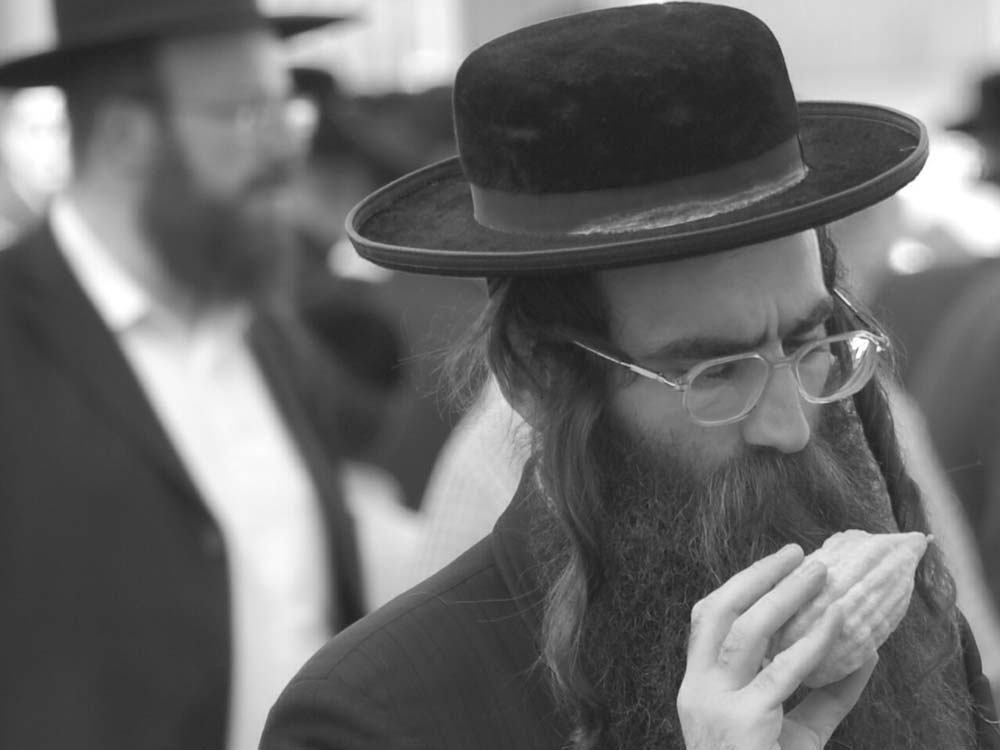
What is the reason for the sidecurl rules?
Unlike the rules for women (which are based on the practicalities of modesty), the reason for Ultra-Orthodox mens' hair and curl rules is not clearly known. The original basis is a scripture which states that a man should not "round the corner of his head." Authoritative talmudic scholars have determined that the meaning of this scripture are these sidecurl rules. As for the reason behind the rule - it is commonly thought that this is a type of commandment which G-d has provided no explanation for. G-d simply instructed it, and devout Jews are expected to adhere.
Overall, many of the 613 Jewish commandments are based with logic or practicality (such as washing one's hands before eating) while other commandments are dictated with no explanation and the worshiper is expected to follow without questioning it.
Ad
What about the beard?
Many Orthodox Jews are known for wearing a beard. The reason for the beard is as follows: there are regulations on how a man may shave his facial hair. Most Orthodox Jews will not use a razor to shave - instead they will use an electric shaving device. Other Hasidic Jews go further with this and they do not shave at all. They are making a clear open statement that they go above and beyond the minimal requirements of the rules.
Unlike women's hair rules that only apply upon marriage, mens' beard rules apply immediately when a teenager starts to grow facial hair.
Hasidic Jewish Weddings & Marriage
Weddings are a big deal in the Ultra-Orthodox community because families have alot of children, and they usually get married around age 18-21.
The romantic match is arranged by the parents. When a match is proposed, the parents will vet each other based on each family's reputation, the talmudic academic accomplishments of the candidates, and other factors. Then the young man and woman will meet under supervision to see if there is chemistry, then subsequently go alone on a series of dates. Sometimes there are families who are particularly devout, where the young man and woman are not given a choice in the matter.
Usually within a few weeks or months, a marriage proposal will be made, and then it will be time to arrange the wedding!
A Hasidic Jewish wedding will generally take place in the evening on any day of the week except Friday or Saturday. Hasidic Jews have a self-stereotype of lateness: that the guests will arrive late, and the program will begin late. It's probably not going to start at the scheduled time!
The genders are kept 100% separate for the duration of the wedding. The main wedding hall will be divided with barriers between men and woman.
The bride and groom each fast (refrain from eating) all day before the wedding. They also do not see each other on that day until the official ceremony. The ceremony is called a "Chuppah" and it takes place under a canopy. A rabbi will officiate the blessings and verses. After the groom places a wedding ring on the bride, he will stomp on a glass goblet on the floor. The reason for this is to remember the sadness of the ancient holy temples being destroyed. Upon completion of the ceremony, the bride and groom will go to special room where they will be together in private for the very first time.
Next it's time for dinner and celebratory dancing. Each gender dances on their respective side of the room. European Jewish music will be played by a live band, while the attendees carousel in a circle. Late in the evening, acquaintances and/or people who did not receive a personal invitation will stop in to give well-wishes. An energetic Hasidic wedding may end by around midnight or later.
The following video shows a mildly strict Hasidic wedding. Note that some practices here like the couple openly holding hands, or the use of a secular musical tune, would not be done by stricter people.
Video credit: Shimmy Rubinstein Cinematography.
Large family sizes
Hasidic Jewish people are known for having large families. 6-10 children is typical, and sometimes they have as many as 12 or more! This is another practice: reproduce as much as possible. It is considered a top rule which was commanded directly from G-d. This is the reason that even though some sects were nearly wiped out in the Holocaust, there are now communities packed with tens of thousands of people! Most Hasidic sects do not rely on recruiting new members - their growth is primarily due to the high birth rate.
Because of these reasons, Hasidic neighborhoods in the USA are loaded with small children and school buses. The growth has been so much that Hasidic Jewish neighborhoods have become over-saturated, and they have been expanding onto new areas for decades.
Children typically attend private religious schools. The schools are separated by gender. School hours are always long, although it's longer for boys than for girls. Male teenagers might be at school 8:00am - 8:00pm on 5 days per week. The schedule will consist mainly of talmudic studies in the morning and early afternoon, and then in the late afternoon will be secular studies (mathematics, history etc). There will also be 3 prayers every day.
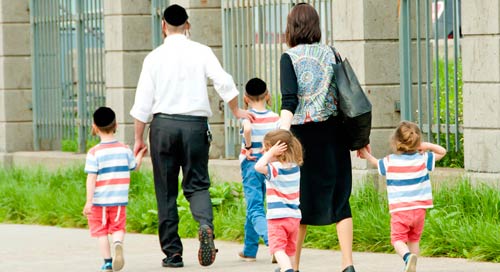
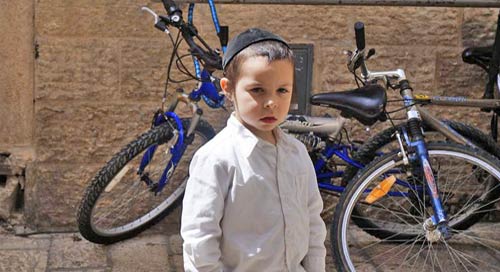
Understanding Hasidic Jewish gender roles
Much of the Ultra-Orthodox culture and rules seem unusual in today's Western society. However in the past this was not as much the case.
It is only in the last generations that women have achieved such equality in Western society. More than 70 years ago, basically anywhere in the world, women would have been in the home cooking, cleaning etc rather than working outside the home. A woman's husband would have asserted alot of control over her. These types of gender roles (which are generally still widely practiced in many parts of the world) would have been seen as totally normal.
Ad
